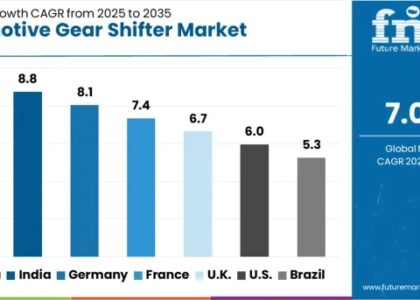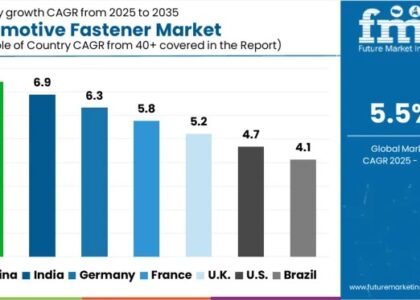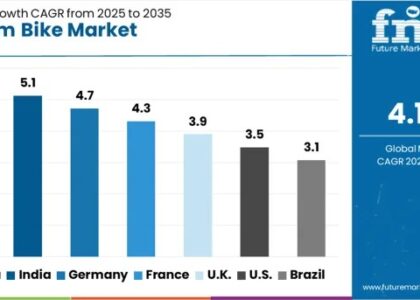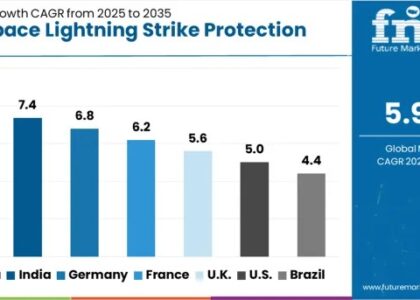The Middle East and Africa bio-stimulants market is estimated to secure a valuation of US$ 84.6 million in 2023 and is projected to rise to US$ 179.2 million by 2033. The market is securing a CAGR of 7.8% during the forecast period.
How are Farmers Adopting Bio-stimulants in the Developing Countries?
The adoption of bio-stimulants by farmers in developing countries is a growing trend. Bio-stimulants are substances and microorganisms that, when applied to plants, can enhance their growth, yield, and tolerance to environmental stressors. These products are typically derived from natural sources, including microbes, plant extracts, and animal waste.
One way farmers in developing countries adopt bio-stimulants is through government initiatives and programs promoting their use. For example, in India, the government has launched a program to promote using bio-stimulants among farmers. Under the program, farmers are provided with free bio-stimulant samples and training on their use and benefits.
Get a holistic overview of the market from industry experts to evaluate and develop growth strategies. Download the sample @ https://www.futuremarketinsights.com/reports/sample/rep-gb-12798
Another way that farmers are adopting bio-stimulants is through private sector initiatives. Many companies are developing and marketing bio-stimulants to farmers in developing countries. These companies often work closely with farmers to educate them on bio-stimulants benefits and how to use them effectively.
In addition, farmers in developing countries are adopting bio-stimulants through peer-to-peer learning and knowledge sharing. Farmers who successfully used bio-stimulants in their fields are sharing their experiences with other farmers to increase awareness and adoption of these products.
Overall, the adoption of bio-stimulants by farmers in developing countries is driven by a combination of government support, private sector initiatives, and peer-to-peer learning. As more farmers adopt these products, there is the potential to improve agricultural productivity and sustainability in these countries.
Key Takeaways:
- The Middle East and Africa bio-stimulants marketis securing a CAGR of 7.8% with a valuation of US$ 84.6 million by 2033.
- In the historic period, the market captured a CAGR of 6.8% between 2018 and 2022.
- Egypt is anticipated to capture a significant share of 13.4% of the global market during the forecast period.
- The Middle East and Africa bio-stimulants marketsecured a valuation of US$ 60.4 million in 2018.
Who is Winning?
The bio-stimulants market in the Middle East and Africa region is still in its early stages but rapidly growing. Several key players are making strategic moves in this market, including:
- Agrinos: Agrinos is a global leader in biological crop inputs and has a strong presence in the Middle East and Africa. The company offers a range of bio-stimulant products designed to improve crop yields and quality.
- Isagro: Isagro is a leading Italian company specialising in developing and marketing bio-stimulants and other crop protection products. The company has a growing presence in the Middle East and Africa and offers a range of innovative bio-stimulant solutions.
- Koppert Biological Systems: Koppert is a Dutch company specialising in biological crop protection and natural pollination. The company has a strong presence in the Middle East and Africa and offers a range of bio-stimulant products designed to improve plant growth.
- Novozymes: Novozymes is a global leader in developing bio-based solutions for various industries, including agriculture. The company offers a range of bio-stimulant products designed to improve crop yields and quality.
Another Key Players in the Market are:
- Yara International
- Novozyme A/S
- BioAtlantis Ltd.
- Koppert B.V.
- Syngenta AG
- Seipasa
- Omex Agrifluids Ltd.
- Valagro SpA
- Trade Corporation International-Omnia
- Haifa Group
- Kelp Products International
- Madumbi-Andermatt Group
- Greenlife Crop Protection Africa
Request Customization @ https://www.futuremarketinsights.com/customization-available/rep-gb-12798
Recent Developments in the Middle East and Africa Bio-stimulants Market are:
- In December 2021, Agrinos announced the launch of two new bio-stimulant products in South Africa. The products are designed to improve crop yields and quality in various crops, including maize, wheat, and soybean.
- In November 2021, Isagro announced that it had received approval from the Egyptian Ministry of Agriculture for its bio-stimulant product, Fertirriga. The product is designed to improve crop yields and quality in various crops, including citrus and vegetables.
The Middle East and Africa Bio-stimulants Market Market by Category
By Crop Type:
- Row Crops
- Fruits & Vegetables
- Turfs & Ornamentals
- Other Crop Types
By Active Ingredients:
- Acid-based
- Extract-based
- Others
By Application:
- Foliar
- Soil
- Seed
By Region:
- Egypt
- Morocco
- Algeria
- South Africa
- Libya
About Future Market Insights (FMI)
Future Market Insights (ESOMAR certified market research organization and a member of Greater New York Chamber of Commerce) provides in-depth insights into governing factors elevating the demand in the market. It discloses opportunities that will favor the market growth in various segments on the basis of Source, Application, Sales Channel and End Use over the next 10-years.
Contact:
Unit No: 1602-006
Jumeirah Bay 2
Plot No: JLT-PH2-X2A
Jumeirah Lakes Towers
Dubai
United Arab Emirates
LinkedIn| Twitter| Blogs
For Sales Enquiries: sales@futuremarketinsights.com






